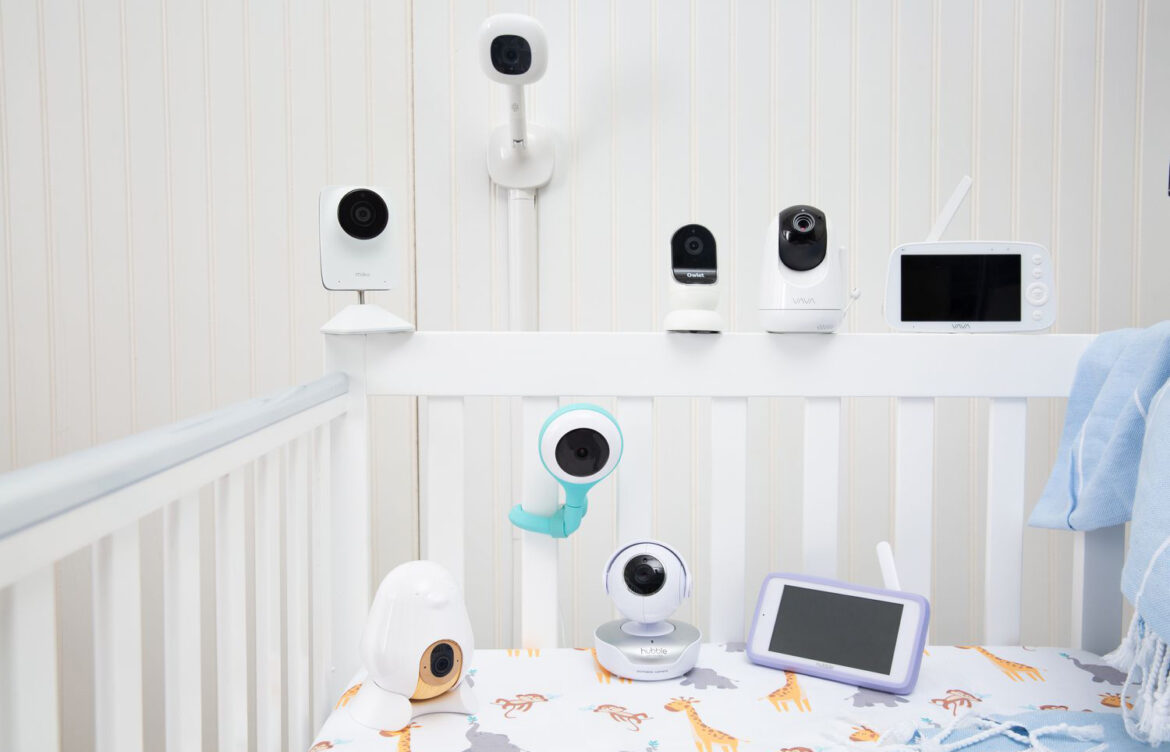
How Do Baby Monitors Work?
Have you ever wondered how baby monitors work? These modern-day guardian angels give you better sleep at night and more freedom during the day, and they come in many types that serve different purposes.
Thanks to years of using them to keep a watchful eye on my children, I had the chance to try all the types and know how they work. Today, I’ll shed light on the innovative technologies that brands use to manufacture baby monitors, so keep on reading!
The Different Types of Baby Monitors and How They Work
There are four main types of baby monitors that you can find on the market. I’ll break them down for you one by one and tell you how they work and whether they’re a suitable fit for you.
1. Audio-Only Monitors
Audio-only monitors are the first type of baby monitors to make their way to the market. After their name, they transmit sounds only without any visual output, which means you’ll hear your baby cry but won’t be able to watch them sleep.
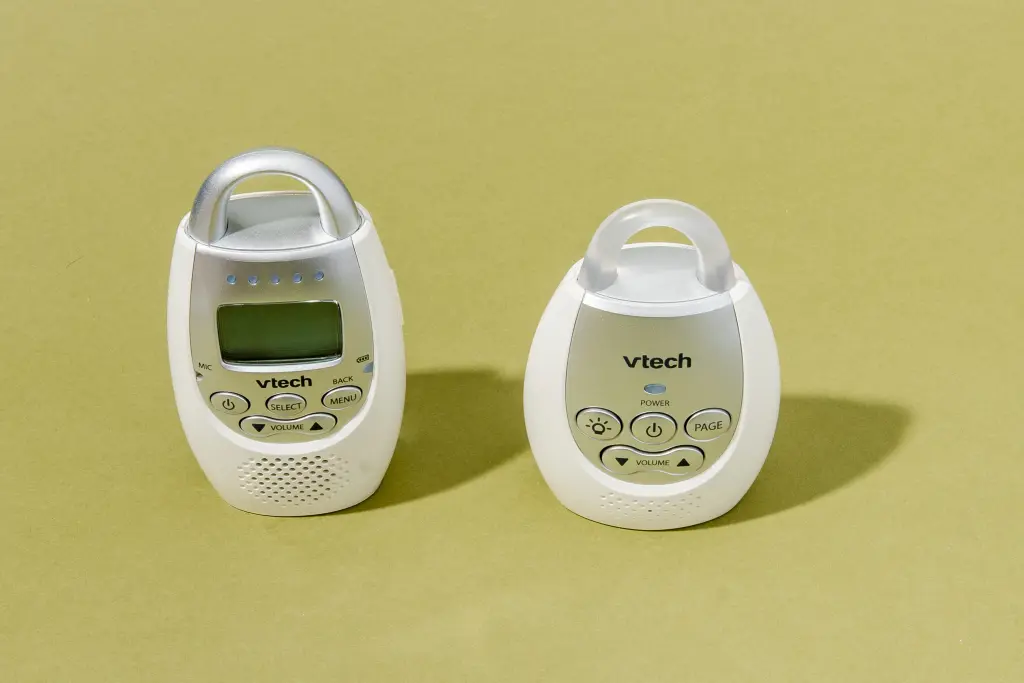
These monitors work with the most basic technology ever, high-frequency radio waves. They consist of two parts, a transmitter unit and a receiver unit. The transmitter unit stays in the baby’s room and picks up any sounds that your baby produces. Meanwhile, the receiver unit stays near you so that you can hear your baby’s cries.
If your baby wakes up and cries, the transmitter unit will send these sound signals to the receiver unit through radio waves. Thanks to this operating mechanism, audio-only monitors don’t need WiFi to operate or connect, which is more convenient for multiple reasons. This doesn’t mean that they come without cons, though!
Here’s a list of the pros and cons you should expect with audio-only monitors.
Pros:
- Long battery life since there’s no ongoing internet connection or video streaming to consume it
- More affordable than any other type, thanks to the basic operating technology
- Longer distance range than video monitors because audio isn’t as high-quality output as video, so the receiver doesn’t need to be too close to the transmitter
Cons:
- No visual output, which can be unsettling for worrying parents
- Basic technologies mean you won’t enjoy any luxurious features
2. WiFi Video Monitors
WiFi video monitors are much more advanced than audio-only monitors, given that they deliver both audio and visual outputs and use the internet to work. Thanks to that, they have a more complicated operating mechanism than their counterparts.
These monitors commonly come in one piece, a transmitter unit that connects to your smartphone, which acts as a receiver in this case. WiFi transmitters pick up audio and video signals from your baby’s room and transmit them to an internet router, which then redirects them to your phone.
To use your phone as a receiver, you’ll need to download the monitor brand’s application. Then, you’ll be able to hear and watch your baby from anywhere in the world with a stable internet connection.
Because of this advanced operating mechanism, WiFi video monitors have an unlimited distance range as long as both the transmitter and your smartphone are connected to the internet. Most of them are also equipped with Voice Over Internet Protocol technology (VOIP), which gives you a chance to talk back to your baby through the monitor.
Pros:
- They give you more freedom of movement, thanks to the unlimited distance range
- You’ll know if your baby wakes up and rolls around without crying, which is a privilege audio-only monitors don’t provide
- WiFi monitors usually come with many luxurious features, like talk-back functionality and playing white noise for your baby while they sleep
Cons:
- Pricier than all the other types because of the innovative technologies used
- More prone to hacking than radio-operating monitors
3. Non-WiFi Video Monitors
Non-WiFi video monitors bring you the best of both worlds. They transmit both audio and video without the need for an internet connection, making them a favorite for many people, including me!
These monitors consist of two pieces, a transmitter and a receiver. The transmitter is a camera and audio recorder, while the receiver is a small display that delivers high-quality video output.
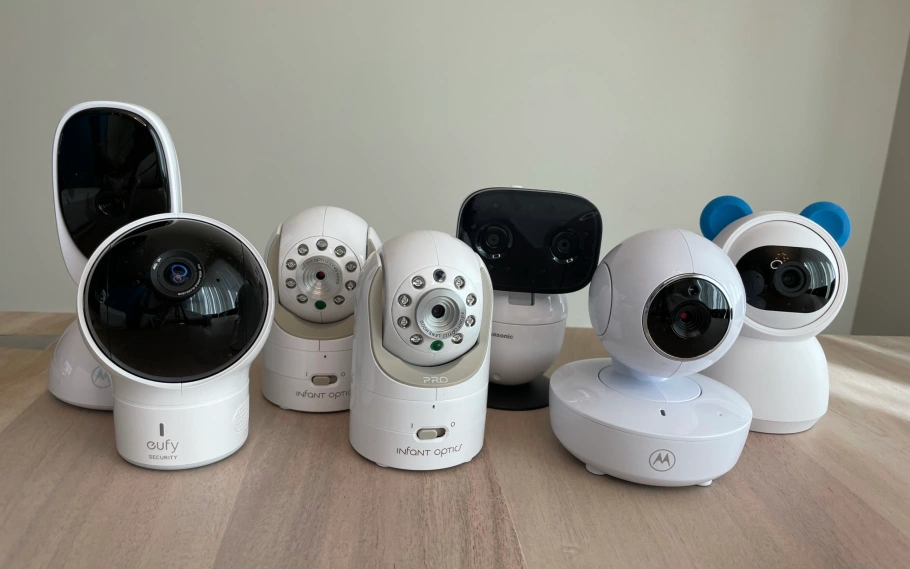
Non-WiFi monitors work using more advanced technology than radio signals. They utilize a transmission method called Frequency-Hopping Spread Spectrum (FHSS) to be able to transmit video signals, not only audio. This method consists of sending signals as encrypted messages over frequency bands in a spontaneous pattern, which is only recognized by the receiver unit.
This unique signal-sending mechanism prevents interference with any other frequencies, which might occur with audio-only monitors. It also delivers premium-quality output, not grainy photos and unclear sounds.
Pros:
- They work perfectly well during power outages and areas without internet, unlike their WiFi counterparts
- No risk of hacking through the local internet network
- They’re more budget-friendly than WiFi monitors because of the less advanced transmission method
Cons:
- Limited distance range because the transmitter needs to be near the receiver to deliver clear images
- Shorter battery life than audio-only monitors because of constant video streaming
4. Movement Monitors
The last type I’ll talk about, movement monitors, isn’t your conventional baby monitor. Instead of using it to watch and hear babies while they sleep, parents use it to monitor the child’s movements. It comes in handy for children with health concerns or breathing problems, the most common problem being sleep apnea.
Babies with sleep apnea might stop breathing for a few moments while sleeping, which can affect their basic functioning during the day.
Movement monitors help parents become aware of this problem, as they send an alert if the baby stays completely still for longer than a few seconds. They come in two pieces, a sensor pad that you should put under the baby’s mattress and a receiver unit that you should carry around.
The sensor pad detects the weight of your child on the mattress and sends signals using a connection similar to Bluetooth but with less energy consumption. That said, some monitors work with different mechanisms, depending on the brand you buy.
Pros:
- They detect many vitals and record them, like breathing rate, heart rate, oxygen saturation, and more
- They give you better sleep at night, knowing they’ll wake you in case of a problem, instead of going back and forth to your baby’s room all night
- No need for an internet connection to work
Cons:
- The possibility of false alarms is high since your baby might roll while sleeping and move from above the monitor, meaning the pads will detect false stillness
- They’re pricier than the other types because of the innovative technologies used to manufacture the sensors
What Is the Best Baby Monitor Operating Mechanism?
From experience, the best operating mechanism is that of non-WiFi video monitors. Since they don’t depend on the internet, they provide more safety and are immune against internet hacks, which are a real threat in some cities.
Also, audio-only monitors are prone to radio frequency interferences, and WiFi monitors are prone to power outages and unstable internet connections. Meanwhile, non-WiFi monitors work perfectly well all of the time.
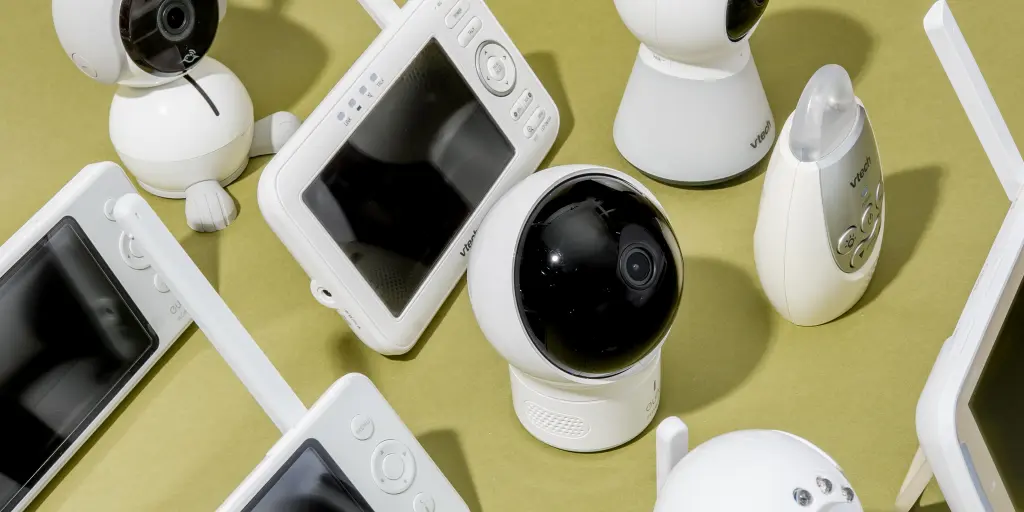
Movement monitors are out of comparison because they serve a specific purpose. While I think they’re essential in many cases, I don’t recommend depending on them solely for monitoring your baby. Since they don’t transmit audio and video output, a regular video monitor is your best bet to keep a watchful eye.
If you still need help settling on a specific monitor type, check out my article on how to choose the right baby monitor!
Why You Need a Baby Monitor
Despite years of proving their worth, some parents are still convinced that baby monitors aren’t that important. While I agree with this fact in the case that you live in a small house with thin walls, guaranteeing that you can hear your baby’s cries from any room, it’s not always true.
Suppose your baby sleeps in a different room, and you’re a deep sleeper. You might not always hear their cries from the other room. A monitor comes in handy here as it guarantees that you’ll wake up as soon as your baby wakes. Not only will this give you better sleep at night, but it’ll also make sleep-training your children much easier.
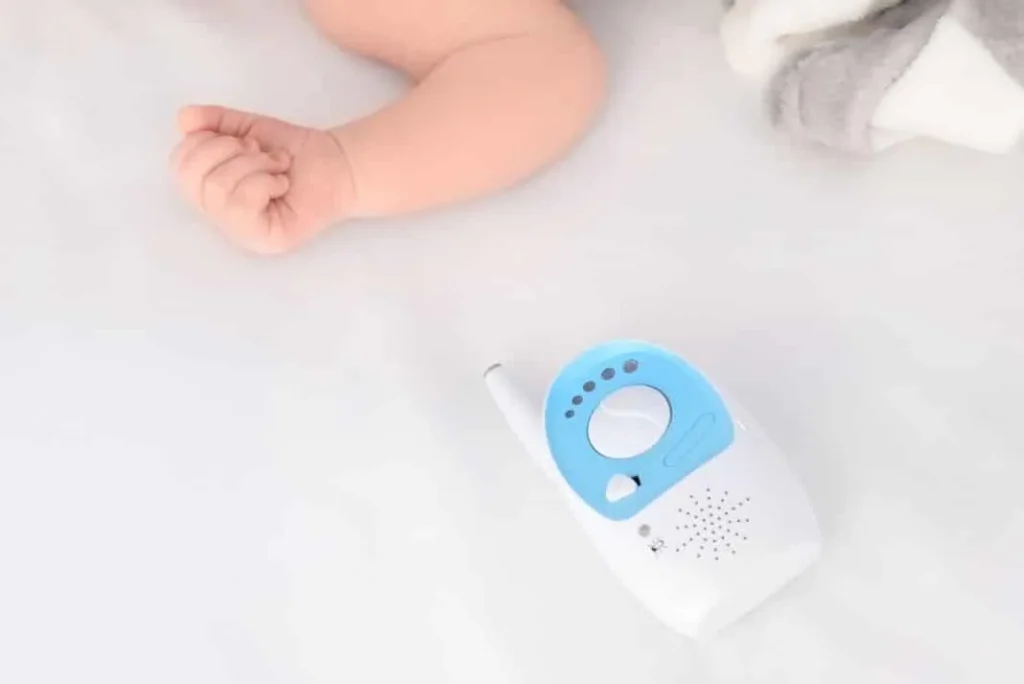
Another situation where baby monitors come as a knight in shining armor is if you want to leave your baby with a nanny but are reluctant to do so without supervision. In this case, you can use a video monitor to watch how they do all day, giving you a clear mind to focus on things that matter at the moment.
Finally, all parents know how much of a challenge it is to take showers with a newborn nearby. What if they wake up and you don’t hear them because of the noise water makes? Setting up a camera in their room and taking the receiver to the bathroom solves this issue.
All in all, after years of sleep training and baby monitoring, I can comfortably say that baby monitors are as important as cribs in the nursery, believe me!
Commonly Asked Questions by Parents!
Is the Talk-Back Functionality in Baby Monitors Important?
I think it’s more of a luxurious feature than an important one, as you can talk comforting words or sing lullabies to your baby without getting up from your place. However, there’s no guarantee that your child will fall back asleep without your presence, so you might still have to take a quick trip to their room. Personally, I don’t think you’ll miss this feature if it’s not there.
Can I Use My Smartphone as a Baby Monitor?
Yes, you can. If you have a tablet or smartphone that you don’t use anymore, you can set it up in your baby’s room and start a Zoom call. Then, you can watch the little one using your own smartphone. However, this method isn’t convenient in the long run because both devices will lose battery charge fast.
What Are the Best Baby Monitor Luxurious Features?
The best extra features you can look for in a monitor for more luxury are night vision so that you can see your baby without turning the light on, nightlight in case your child fears the dark, and white noise to help them sleep faster.
To Wrap Up
Baby monitors come in many types, and each one works using a different method. Audio-only monitors work using radio waves, while Wi-Fi monitors work over the internet. Non-WiFi monitors use a transmission method called FHSS, and movement monitors work over a network similar to Bluetooth.
They’re all reliable enough for your baby, but each comes with a list of pros and cons that you should consider before purchasing.